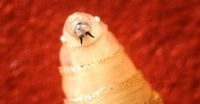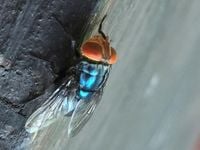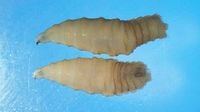On August 26, 2025, U.S. health officials confirmed a development that sent ripples through both medical and agricultural communities: the first human case of New World screwworm in the United States since the parasite’s eradication in the 1960s. The patient, a Maryland resident, had recently returned from El Salvador, a country currently experiencing an outbreak of the flesh-eating parasite. According to the Department of Health and Human Services (HHS) and the Centers for Disease Control and Prevention (CDC), the individual has since recovered, and there is no evidence that the infestation spread to other people or animals.
While this might sound like the premise of a medical thriller, it’s a stark reminder of how interconnected the world has become—and how quickly old foes can resurface. The confirmation came after the CDC reviewed images of the insect responsible for the infestation, and the case was soon attributed to travel in a region facing a significant outbreak. As reported by ABC News and TIME, Central America has been grappling with a surge in screwworm infestations, affecting both livestock and humans. In Nicaragua alone, more than 120 human cases were reported in the last year, according to the U.S. embassy in Managua.
But what exactly is the New World screwworm? Scientifically known as Cochliomyia hominivorax, this parasitic fly is native to tropical and subtropical regions of South America and the Caribbean. Unlike most flies, which lay eggs on decaying organic matter, the screwworm targets living animals—mammals, birds, and, in rare cases, people. The female fly seeks out open wounds or mucous membranes, such as the nose, mouth, or eyes, and deposits between 200 and 300 eggs at a time. Once hatched, the larvae (or maggots) burrow into healthy tissue, feeding on living flesh and causing a condition known as myiasis.
“New World screwworm kind of gets its name because these are little parasites and, when they actually land on an open wound, they’re going to screw down into the wound—that’s how they burrow in—and actually consume tissue,” explained Lori Ferrins, associate professor of pharmaceutical sciences at Northeastern University, in an interview with ABC News. The larvae, which can grow up to two-thirds of an inch, cause painful, non-healing wounds, bleeding, and a foul odor. Sometimes, maggots are visible in the affected area—a telltale sign of infestation.
Dr. Shira Doron, chief infection control officer for Tufts Medicine Health System, described the larvae as “particularly nasty,” adding, “Here in the hospital, we may have a patient come in and, with a painful open wound, we may notice that there are larvae or maggots in it.” The CDC warns that the maggots can also be found in the eyes, nose, and mouth, and untreated infestations can be deadly, especially if secondary bacterial infections develop.
Treatment for New World screwworm is not as simple as taking a pill. There is currently no approved drug-only cure for humans. Instead, the standard protocol is the physical removal of the maggots—sometimes requiring surgery. “If you see or feel maggots (larvae) in or on a wound or other area of your body, contact your healthcare provider immediately,” the CDC urges. “They will need to remove the larvae, sometimes through surgery. Do not try to remove or dispose of the maggots yourself.” The CDC also recommends sending removed larvae to specialized labs for identification, which helps guide public health responses.
Prevention is, not surprisingly, the best medicine. The CDC advises travelers to endemic regions to keep wounds clean and covered, use EPA-approved insect repellents, and wear protective clothing such as long sleeves and pants. “All of the techniques that you’ve probably heard of to avoid insect bites, because there are so many health implications that are associated with a wide variety of insects,” Ferrins noted.
The U.S. has a history with this parasite. Before the 1960s, screwworms were a recurring nightmare for ranchers, particularly in Florida and Texas. The pest could decimate cattle herds, with the National Cattlemen’s Beef Association noting that screwworm can kill fully grown cows in a week to ten days. At its peak, the parasite threatened $100 billion in U.S. economic activity tied to the livestock industry, according to the U.S. Department of Agriculture (USDA). To combat this, the U.S. launched an ambitious eradication campaign: billions of sterilized male screwworm flies were released, mating with wild females and producing infertile eggs. This strategy, known as the sterile insect technique, wiped out indigenous screwworm populations in the U.S. by 1966. A similar approach was used to contain a 2017 outbreak in the Florida Keys, which affected animals but not humans.
Despite this success, the parasite has not disappeared from the Americas. Populations have been advancing northward through Central America and Mexico since 2023, raising concerns about reintroduction. The Maryland case is not the first time a traveler has brought screwworm back to the U.S. In 2023, a traveler returned to Arkansas with a screwworm infestation after visiting Argentina and Brazil. Last year, another traveler brought it home to Florida from the Dominican Republic. However, these cases remain exceedingly rare, and there has been no evidence of local transmission in the U.S. following these incidents.
To address the renewed threat, the U.S. government has announced new measures. These include the emergency use of veterinary drugs to treat or prevent infestations in animals and the construction of a sterile fly production facility in Texas. “There are steps we can take … to then control or eliminate the presence of [NWS], just like we did in 1966,” Ferrins said. “When the female screwworm fly goes on to kind of lay its eggs again, they don’t hatch. And so that effectively stops the life cycle.”
The USDA, in a press release earlier this month, emphasized that New World screwworm “is not only a threat to our ranching community—but it is a threat to our food supply and our national security.” Still, experts stress that the risk to the general public remains very low. “My advice to people would be: be on your guard but ultimately, there’s no active signs of infection here, locally acquired infection in the United States,” Ferrins reassured.
The Maryland case may be isolated, but it serves as a reminder of the importance of surveillance, research, and international cooperation in a world where diseases can cross borders as quickly as people do. With climate change shifting the habitats of many species and global travel at an all-time high, vigilance is more important than ever. For now, the U.S. remains screwworm-free—but, as history shows, complacency is not an option.



